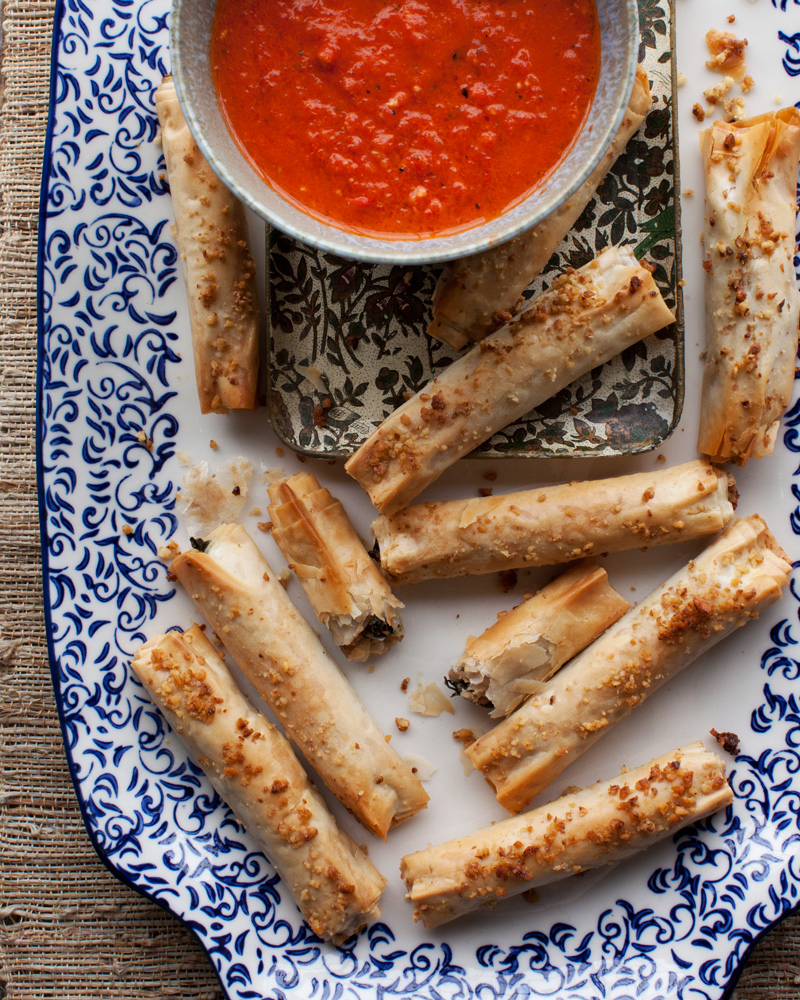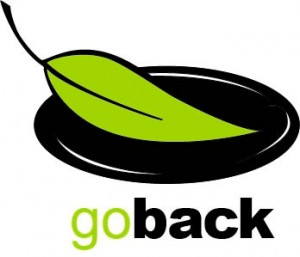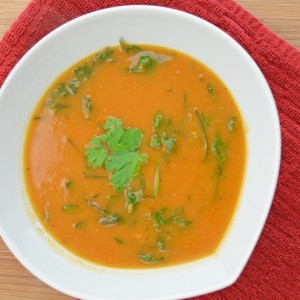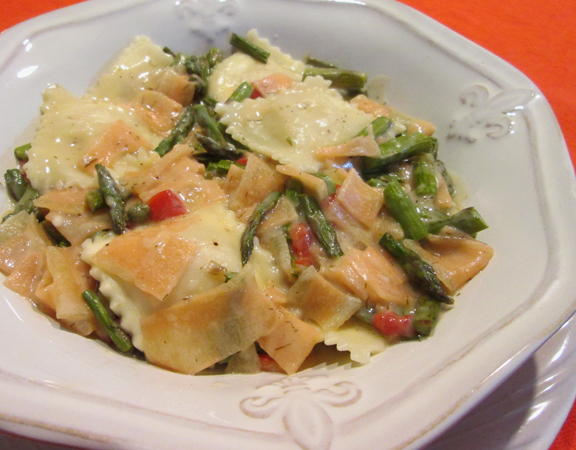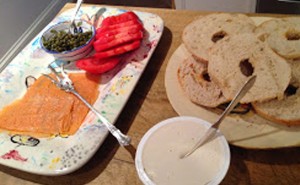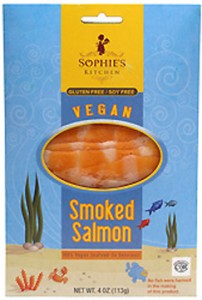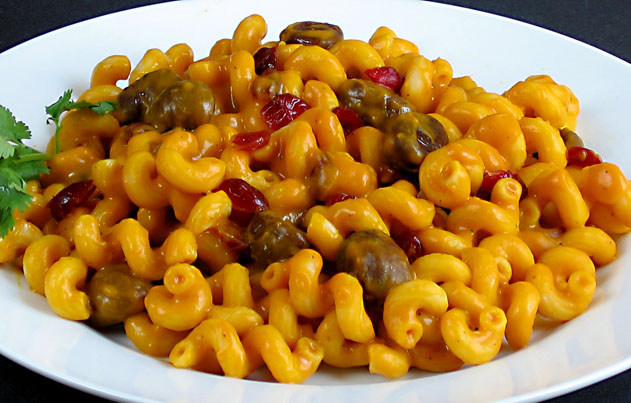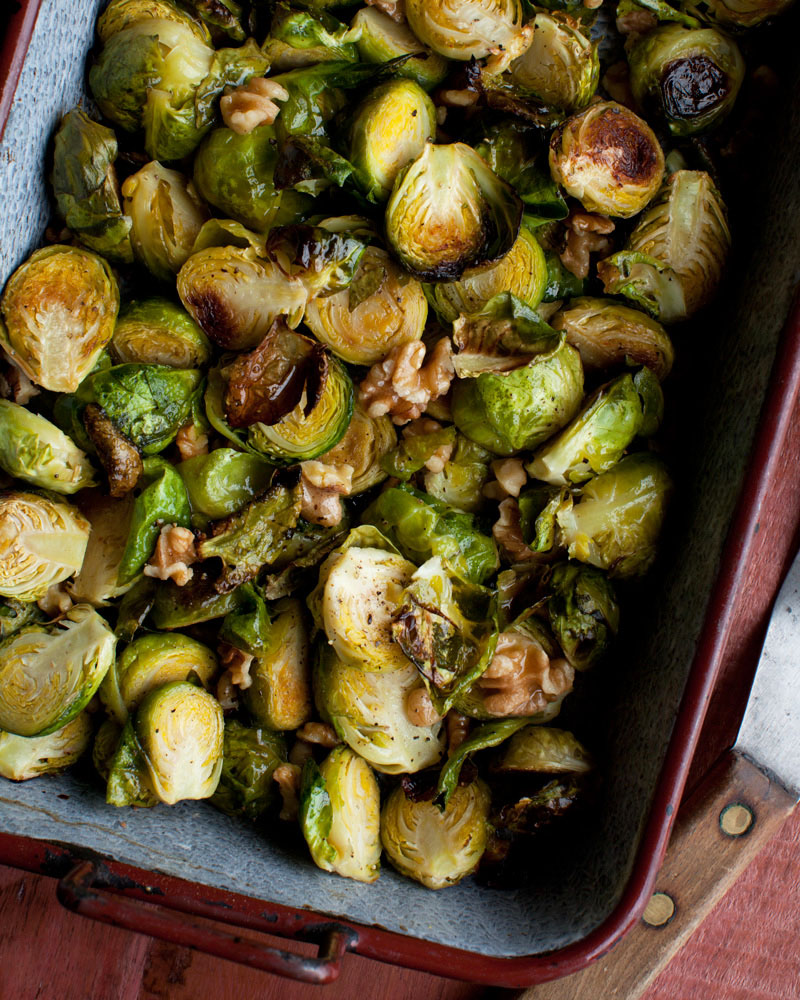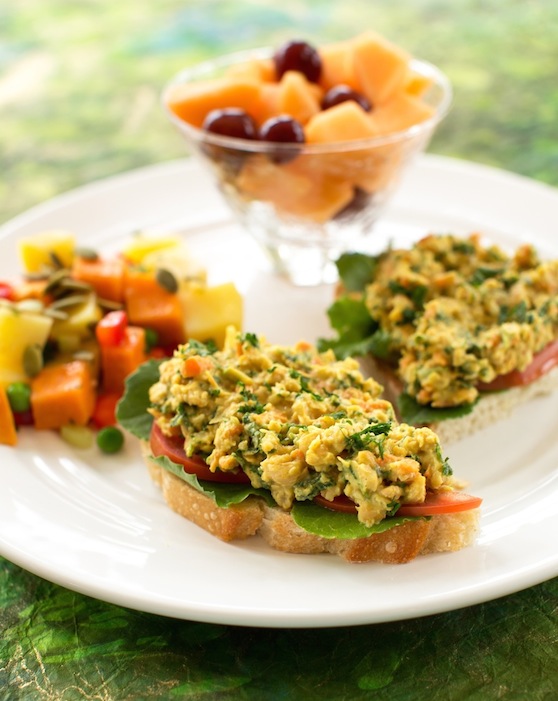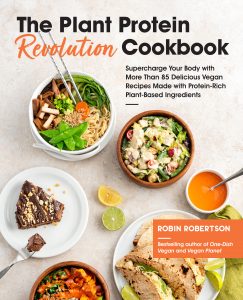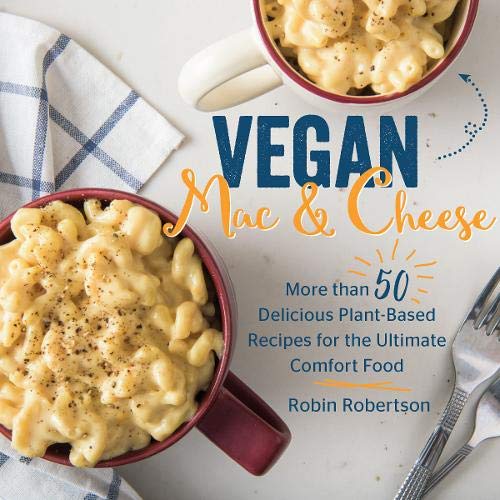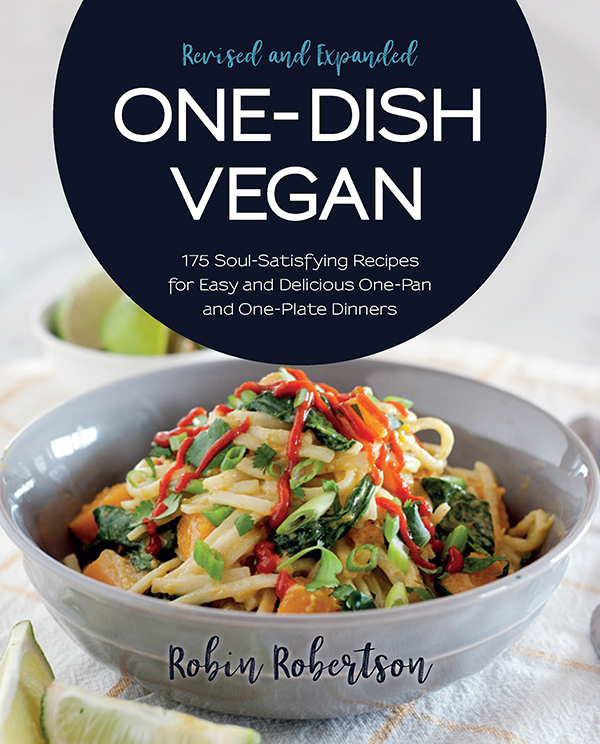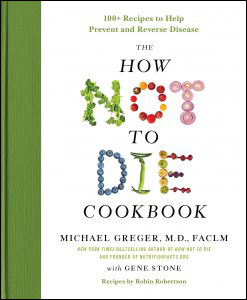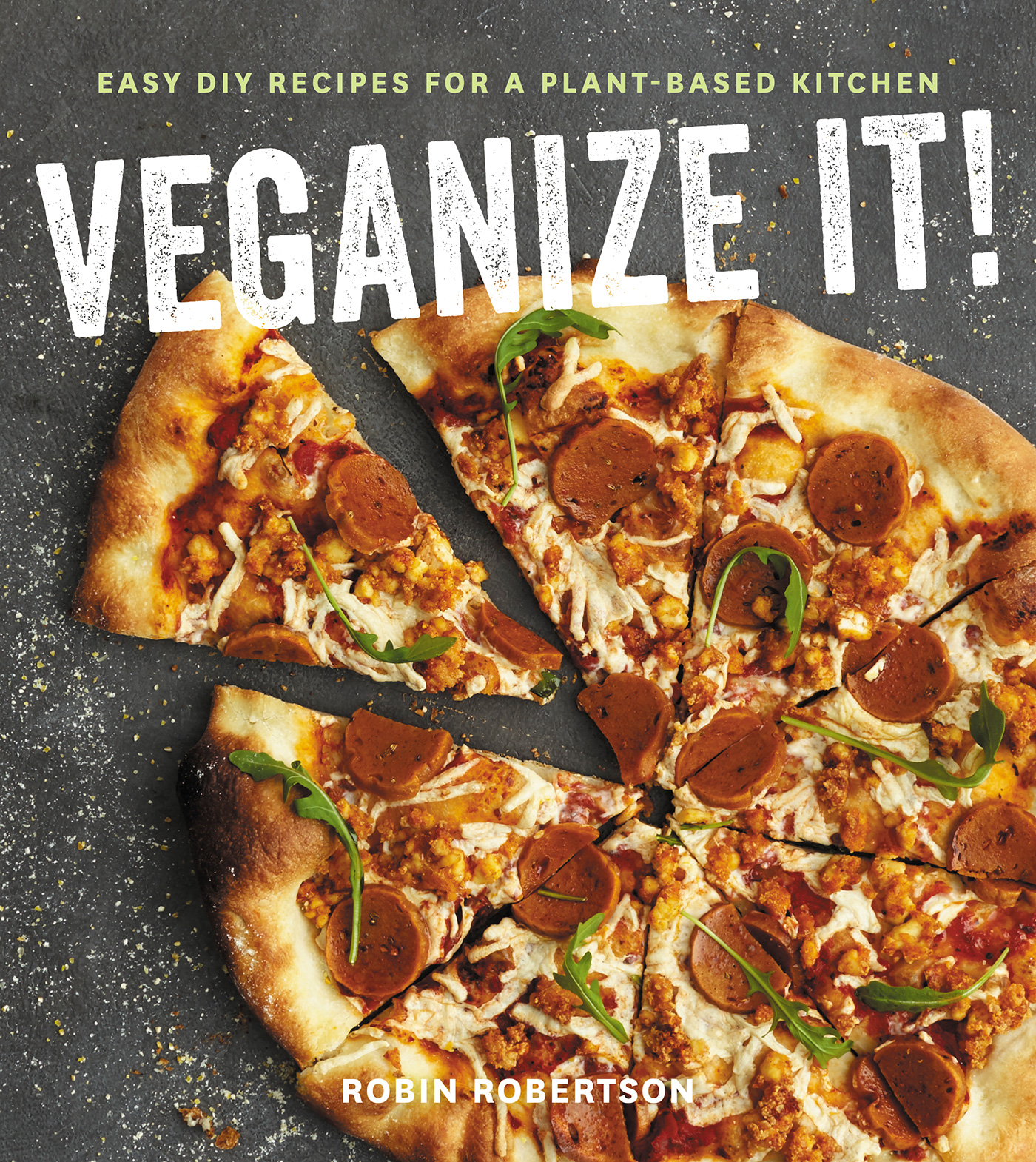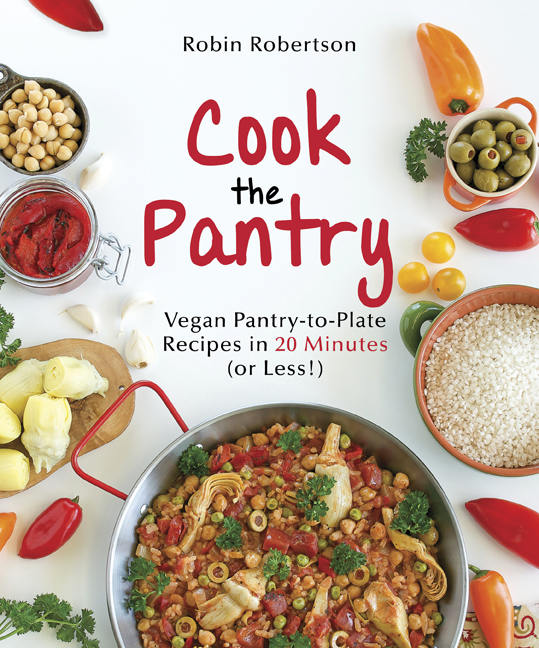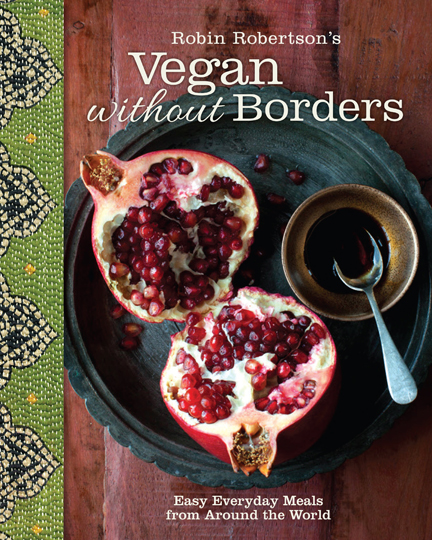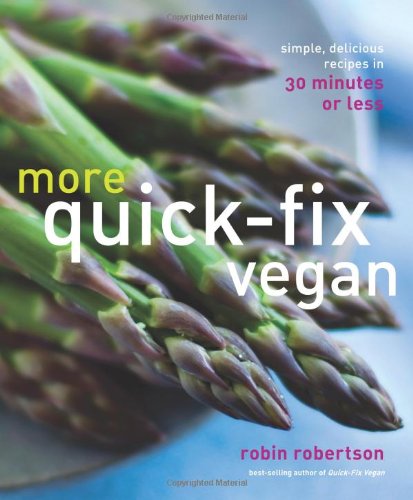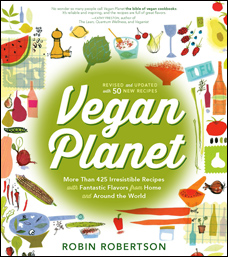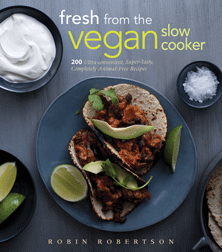This is one of my favorite pick-up foods — so fun to serve at holiday gatherings. Variously known as sigara (cigarette) or kalem (pen) böregi (or börek), these delicious appetizers are believed to have originated in what is now Turkey. These small cylindrical phyllo pastries filled with a savory stuffing are popular throughout the Middle East, as well as the Mediterranean and parts of Eastern Europe. My favorite filling is made with kale and white beans. Wrapped tightly into little phyllo “pens,” they look a bit like crispy spanakopita spring rolls. I hope you enjoy them!
Kale-Stuffed Phyllo “Pens”
This recipe is from Vegan Without Borders by Robin Robertson © 2014, Andrews McMeel Publishing. Used with permission.
Ingredients:
- 1 tablespoon olive oil, plus more to brush phyllo
- 1 medium yellow onion, minced
- 3 cloves garlic, minced
- 12 ounces kale, tough stems removed, finely chopped
- 1 teaspoon dried oregano
- 2 tablespoons chopped fresh dill
- ½ teaspoon dried mint
- 2 teaspoons finely grated lemon zest
- 1½ cups cooked white beans, or 1 (15.5-ounce) can, drained, rinsed, and mashed
- Salt and freshly ground black pepper
- 8 (14 by 18-inch) sheets phyllo dough, thawed
- ¼ cup finely ground walnuts
- Ajvar (recipe follows), optional
Preparation:
Heat the oil in a deep skillet or Dutch oven over medium heat. Add the onion and garlic and cook until softened, about 4 minutes. Add the kale and cook, stirring, until wilted, about 5 minutes. Stir in the oregano, dill, mint, and lemon zest. Add the mashed white beans and season with salt and pepper to taste. Transfer to a bowl and mix well. Set aside or refrigerate to cool completely before using.
Place a sheet of phyllo dough on a flat work surface. Brush the sheet evenly with olive oil and top it with a second sheet of phyllo. And brush the second sheet with oil. Keep the remaining dough covered with plastic wrap or a clean towel to keep from drying out. Use a sharp knife to cut the phyllo sheets into three strips. With the short side of the phyllo facing you, spoon a line of the filling (about 1-inch diameter) about 1 inch from the bottom edge of a strip of phyllo, about ½ inch from each side. Fold in the side ends of the phyllo toward the center, then use both hands to tightly roll up the phyllo to enclose the filling, evenly and firmly rolling it up into a tight roll, as you would a spring roll.
Transfer the phyllo “pen” to a platter. Repeat the process for the remaining phyllo until the filling is used up. When all of the böregi are assembled, cover tightly with plastic wrap and refrigerate for at least 30 minutes.
To bake, preheat the oven to 400°F. Arrange the böregi on a nonstick baking sheet. Brush the top of the phyllo rolls with any remaining oil and sprinkle with the walnuts. Bake until crisp and golden brown, 15 to 18 minutes. Serve with ajvar, if using.
Makes 1 dozen
Ajvar
This flavorful Balkan condiment made with red peppers can be used as a dip for pita chips or as a sandwich spread with crisp vegetables. It can also be enjoyed as a zesty accompaniment to the Kale-Stuffed Phyllo “Pens.” Ajvar often contains eggplant as well and can be made mild or spicy, according to taste. This recipe is from Vegan Without Borders by Robin Robertson © 2014, Andrews McMeel Publishing. Used with permission.
Ingredients:
- 1 tablespoon olive oil
- 3 cloves garlic, chopped
- 1 fresh hot chile, minced or ½ teaspoon red pepper flakes
- 2 plum tomatoes, seeded and chopped
- 2 roasted red bell peppers (jarred or home-roasted), chopped
- 2 teaspoons freshly squeezed lemon juice
- ½ teaspoon salt
- Freshly ground black pepper
Preparation:
Heat the oil in a skillet over medium heat. Add the garlic and cook until fragrant, 30 seconds. Add the chile and tomatoes and cook for 1 minute, stirring. Add the roasted red peppers and cook for about 10 minutes, stirring occasionally, until the vegetables are softened and well blended. Transfer the mixture to a food processor. Add the lemon juice, salt, and pepper to taste. Pulse until the mixture is finely minced and well combined. You can leave a little texture remaining or you can puree it until smooth. Transfer to a bowl to serve. Store in a tightly sealed container in the refrigerator where it will keep for up to a week.
Makes about 1½ cups

